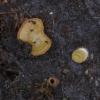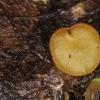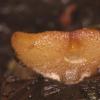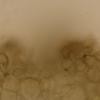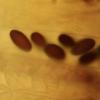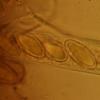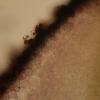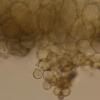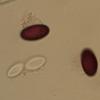
21-01-2026 16:48
Gernot FriebesHi,after my last unknown hyphomycete on this subst

21-01-2026 16:32
Gernot FriebesHi,I need your help with some black dots on a lich

20-01-2026 17:49
 Hardware Tony
Hardware Tony
I offer this collection as a possibility only as e

15-01-2026 15:55
 Lothar Krieglsteiner
Lothar Krieglsteiner
this one is especially interesting for me because

17-01-2026 19:35
Arnold BüschlenHallo, ich suche zu Cosmospora aurantiicola Lite

16-01-2026 00:45
Ethan CrensonHi all, On decorticated hardwood from a New York

18-01-2026 12:24
Hello.An anamorph located on the surface of a thin
Ascobolus cf. foliicola
Zuzana Sochorová (Egertová),
28-06-2022 20:12
 Hello,
Hello,I repeatedly collect a foliicolous Ascobolus in one locality in Moravia (200 m a.s.l., on decaying, very wet leaves of Alnus and Salix, close to the Morava river).
First I identified it as Ascobolus foliicola, but now I am in doubts whether the identification is correct.
The features highlighted by van Brummelen as important for distinguishing A. foliicola and A. denudatus are the following ones:
* stalked receptacle (foliicola) vs. sessile receptacle (denudatus) - I would consider my apothecia rather sessile or only shortly stipitate
* margin permanently furfuraceous (foliicola) vs. soon smooth (denudatus) - here my find fits better A. denudatus
* excipular warts consisting of subglobose and pyriform cells (foliicola) vs. only subglobose cells (denudatus) - I can see a few pyriform cells, but the majority is subglobose
Ornamentation of ascospores clearly fits better A. foliicola, at least when judging from van Brummelen´s illustrations.. Their dimensions are (18.1)18.5-20 (20.4) × 9.7-10.9) µm
Q = 1.8 -1.9
Me = 19.2 × 10.3 µm
How would you determine it?
Zuzana
Zuzana Sochorová (Egertová),
28-06-2022 20:13
Till Lohmeyer,
29-06-2022 10:05
Re : Ascobolus cf. foliicola
Good morning, Zuzana -
comparing van Brummelen's illustrations 40 c (foliicola) and 41 (denudatus) you will note a remarkable difference: The spores of foliicola look like "drawn by a trembling hand", those of denudatus don't. Thus, I'm pretty sure, your fungus should be A. foliicola.
Best regards from Bavaria
Till
comparing van Brummelen's illustrations 40 c (foliicola) and 41 (denudatus) you will note a remarkable difference: The spores of foliicola look like "drawn by a trembling hand", those of denudatus don't. Thus, I'm pretty sure, your fungus should be A. foliicola.
Best regards from Bavaria
Till
Zuzana Sochorová (Egertová),
29-06-2022 17:48

Re : Ascobolus cf. foliicola
Hello Till,
thank you very much!
Zuzana
thank you very much!
Zuzana
Nicolas VAN VOOREN,
30-06-2022 16:00

Re : Ascobolus cf. foliicola
Hello.
A. denudatus can be excluded because its ascospores always show some pustules.
In the other hand, I do not recognize A. foliicola I used to collect, but I do not have any other idea.
A. denudatus can be excluded because its ascospores always show some pustules.
In the other hand, I do not recognize A. foliicola I used to collect, but I do not have any other idea.
Zuzana Sochorová (Egertová),
01-07-2022 18:14

Re : Ascobolus cf. foliicola
Thank you :-)


